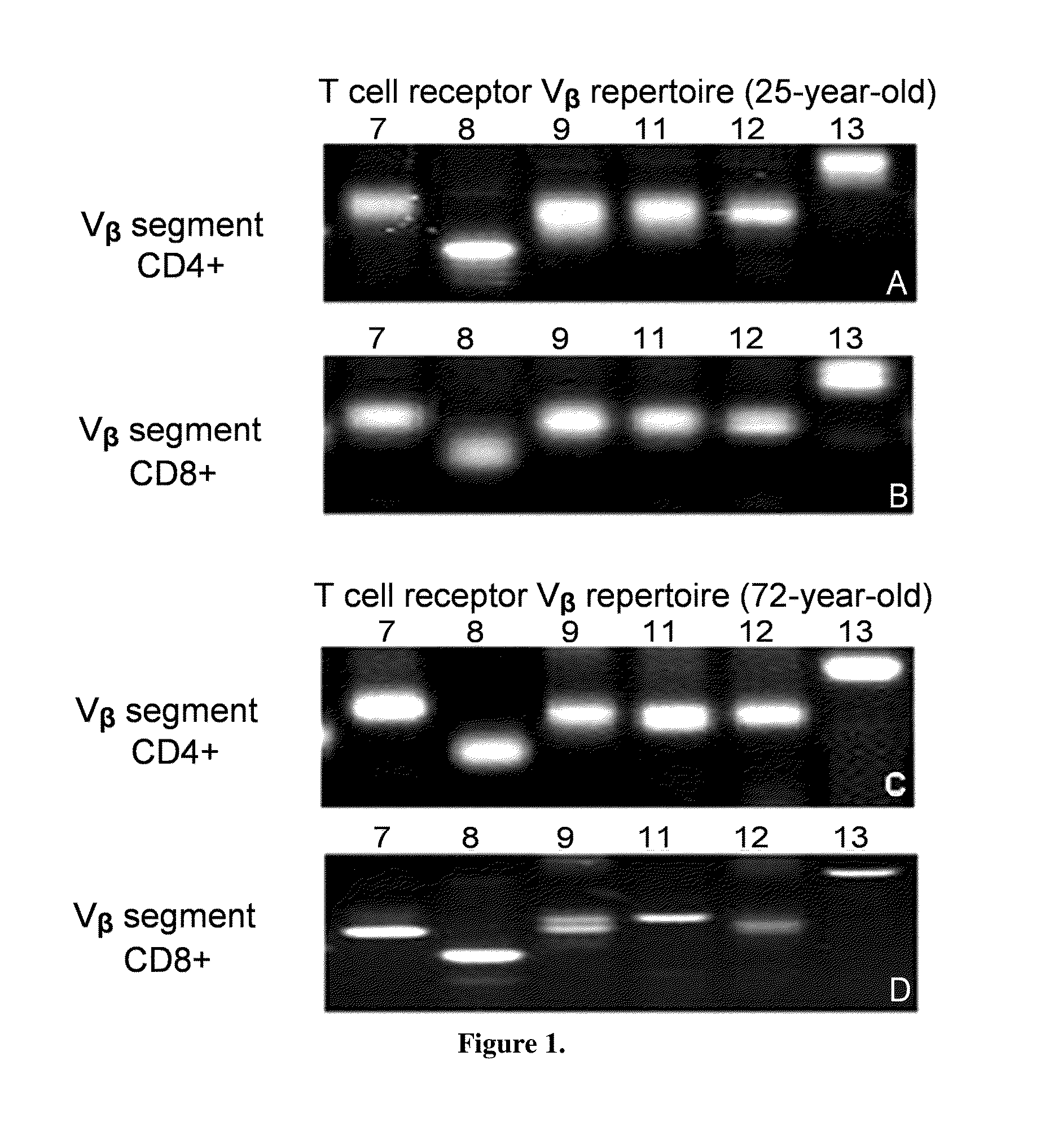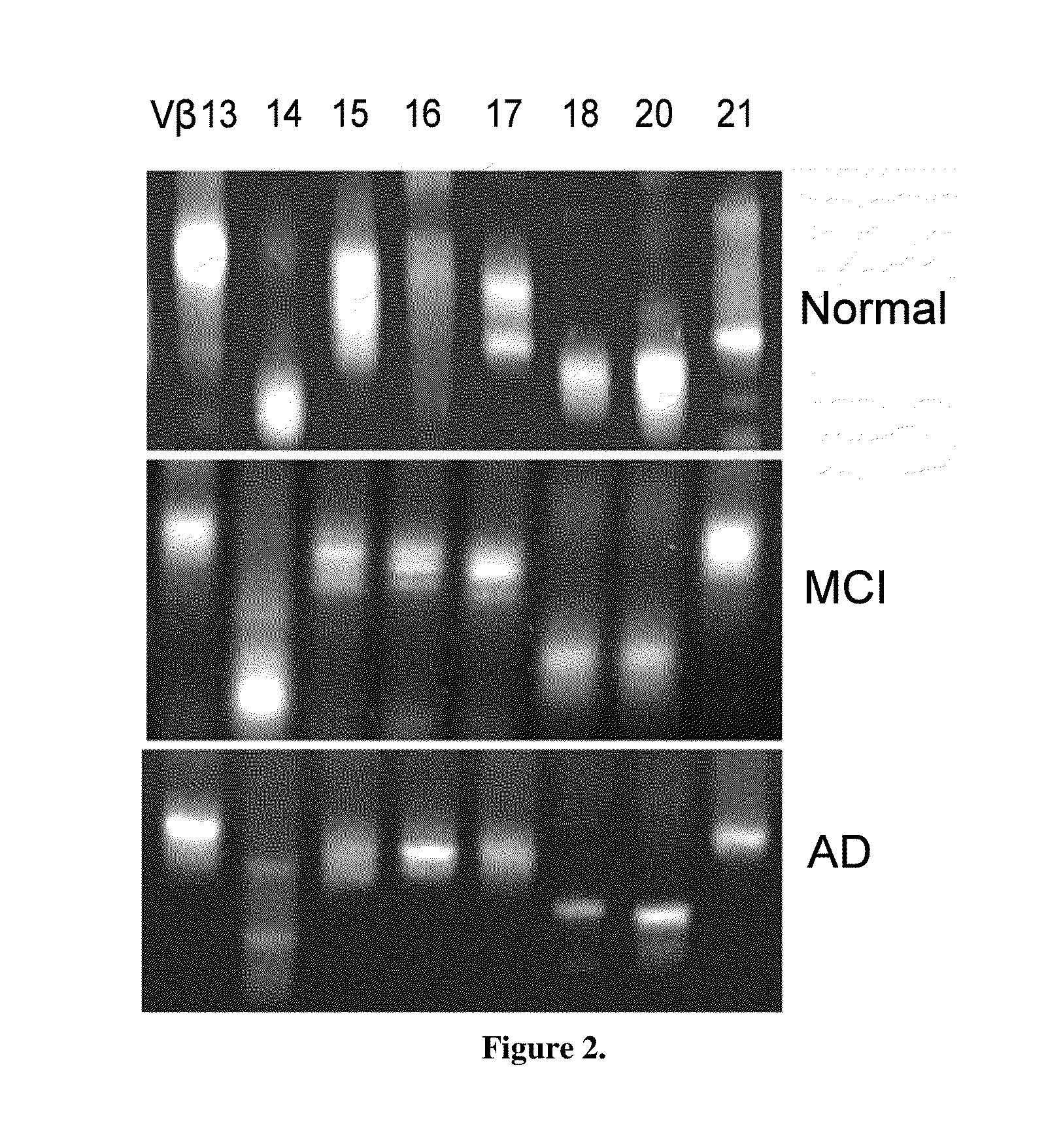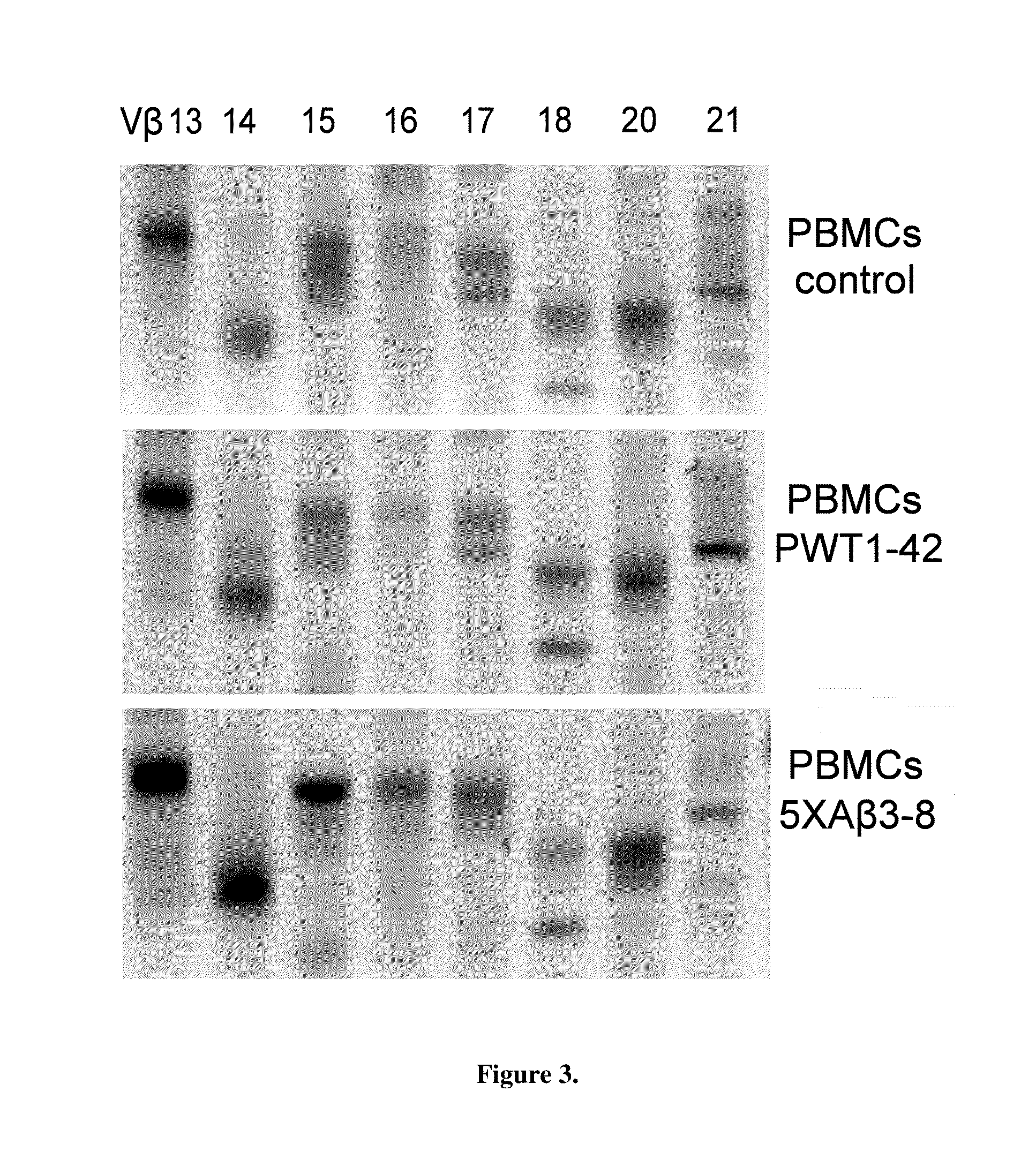Method of diagnosing or assessing risk for Parkinson's disease or Alzheimer's disease using TCR clonality
a technology of parkinson's disease and alzheimer's disease, applied in the field of amyloid beta screening, can solve the problems of haphazard study of adaptive immunity and rarely studied longitudinal analysis of immune system activity, and achieve the effect of enhancing inflammatory reactions
- Summary
- Abstract
- Description
- Claims
- Application Information
AI Technical Summary
Benefits of technology
Problems solved by technology
Method used
Image
Examples
example 1
[0038]Twenty-two distinct human Vβ gene family segments were amplified and evaluated for length heterogeneity of the Vβ segments within T-cell samples from the ADRC, as well as in young and aged controls samples. In both CD4+ and CD8+ T-cell populations, normal length heterogeneity was identified for all 22 Vβ chain gene segments; 6 of which are represented in FIG. 1; in samples from young control blood, as seen in FIGS. 1(A) and (B). With age, length heterogeneity was maintained in the CD4+ T-cells, but in general was reduced in the CD8+ T-cell subset, as seen in the more discrete banding pattern in FIG. 1D compared to FIG. 1B; segments 11 and 13 would be scored as having restricted length diversity. This increase in clonality (decrease in heterogeneity) implies that the repertoire of this Vβ chain has decreased. This type of reaction can be seen after severe immune challenge such as vaccination or disease, when the T-cell population selectively expands those clones which are direc...
example 2
[0043]Subjects having NCI, MCI, or AD were recruited into the clinical core received a full diagnostic evaluation, as required by the National Alzheimer's Coordinating Center (NACC), and classified as normal, having Mild Cognitive Impairment (MCI), or as having dementia, according to NACC standardized protocols. In addition, MCI cases were further classified according to the predominant cognitive feature (amnestic, non-amnestic), as well as the number of cognitive domains that are affected (single vs. multiple). Finally, the differential diagnoses are provided for the dementia cases. Initial diagnosis showed 135 persons as having dementia, with 121 of those classified as probable or possible AD. As for MCI, 132 were classified as having the amnestic variety, whereas 77 were classified as non-amnestic. Finally, 261 individuals were classified with normal cognitive performance (NCI), and another 209 individuals were described by a more recent NACC classification of Impaired-Not MCI.
[0...
example 3
[0060]The twenty-two distinct human Vβ gene family segments were amplified and evaluated as in Example 1, for testing of Parkinson's disease (PD). In both CD4+ and CD8+ T-cell populations, normal length heterogeneity was identified for all 22 Vβ chain gene segments; as seen in FIGS. 8(A) and (B). As noted above, length heterogeneity was maintained in the CD4+ T-cells, but in general was reduced in the aged CD8+ T-cell subset, as seen in the banding pattern of FIG. 1D compared to FIG. 1B, implying the Vβ chain has decreased. TCR kits, were used to test for T-cell clonality detection (Biomed Immunotech, Tampa, Fla.) in PD. As in AD, PD shows a decrease in Vβ segment diversity, though the banding patterns differ between the two diseases, as seen in FIGS. 8(A) and (B).
[0061]The data indicates that there is a loss of TCR and BCR diversity in the AD and PD cases and Ig isotyping changes with disease progress for at least AD and PD. Critically, the diversity must be correlated to age-norma...
PUM
| Property | Measurement | Unit |
|---|---|---|
| Electric potential / voltage | aaaaa | aaaaa |
| Length | aaaaa | aaaaa |
Abstract
Description
Claims
Application Information
 Login to View More
Login to View More - R&D
- Intellectual Property
- Life Sciences
- Materials
- Tech Scout
- Unparalleled Data Quality
- Higher Quality Content
- 60% Fewer Hallucinations
Browse by: Latest US Patents, China's latest patents, Technical Efficacy Thesaurus, Application Domain, Technology Topic, Popular Technical Reports.
© 2025 PatSnap. All rights reserved.Legal|Privacy policy|Modern Slavery Act Transparency Statement|Sitemap|About US| Contact US: help@patsnap.com



